
Pro-Ject X2 Vinyl LP Turntable
Easy to set up and very easy to use. You will not be disappointed.
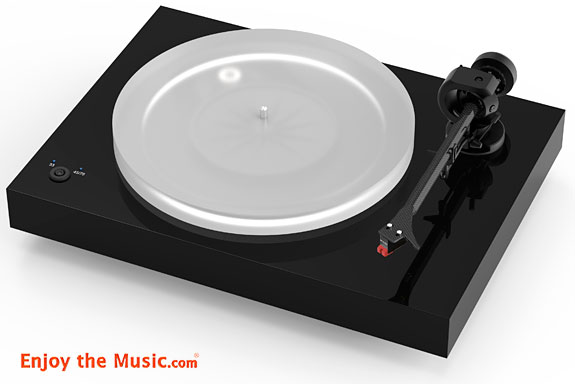
As the technology advances, it’s only natural for any decent audio manufacturer to take advantage of this new technology. And so, when Pro-Ject was faced with improving upon their Debut and Xpression series of turntables, which are both very successful designs, they decided to, in their words, “improve on the technologies that had already been established”. As a result, Pro-Ject introduced their X1 and X2 turntables. The X2, the subject of this review, besides many other improvements, makes the most of higher quality raw materials to use in its production (even though they are more difficult to source), and also increases the size of the turntable’s existing components, which resulted in the chassis, platter and tonearm having greater mass, which made the turntable “heavier, and more robust”.
Vinyl
For quite a long time I’ve been regularly reviewing equipment in my second system located in a common space of our home. Even though my preferred format is analog, for quite a while this second system depended largely on digital sources. And so early in the year I was able to acquire a Pro-Ject Carbon Esprit SB turntable package. When I’m asked by vinyl neophytes who either have no turntable at all, fear spending too much money on a format that they are unfamiliar with, but are still looking to enter (or return to) the wonderful world of vinyl, 90% of the time I recommend Pro-Ject’s lowest priced turntable in their Debut line, their $400 Debut Carbon DC. I asked Pro-Ject for one of these turntables, but they instead recommended that I step up just a bit higher in their line from that model, so they sent me their $600 Carbon Esprit SB. It’s basically the same as the Debut Carbon DC, but has an acrylic platter in place of the steel platter, and also has some other improvements over the lower price turntable package.
I enjoyed this turntable for quite a while. But, alas, as an audiophile I felt as if I could get even better sound for only a bit more money, so I requested the somewhat more expensive, but still in the affordable category, their $1300 Pro-Ject X2 turntable. Even though the more modest Carbon Esprit SB turntable is quite a performer, especially when one takes into account its bargain price (I have many cables in my system that cost more than that turntable!), the X2 not only looks more impressive, it sounds it.
Designed
The X2 is specifically designed to support its large, heavy and dense MDF body. Of course, the more mass a turntable has, the less resonance will be present. This, among other benefits, makes the background of the music being played on the turntable quieter, which is certainly a good thing.
The X2 Pro-Ject’s 9″ tonearm has a tube that is wider than its predecessor, and has a carbon/aluminum sandwich construction, which results in improved internal damping. The tonearm’s bearing has also been upgraded, which compensates for its extra mass. The turntable’s tonearm tracking ends up being more precise, stable, and accurate. At the end of this tonearm is a TPE (thermoplastic elastomer) damped counterweight which is built to reduce any resonances that can be caused by arm/cartridge interaction, in fact, Pro-Ject states that this design reduces resonance by as much as 50%. This, along with its extra mass, makes this turntable behave more accurately when faced with the challenges of a low-compliance Moving Coil phono cartridges.
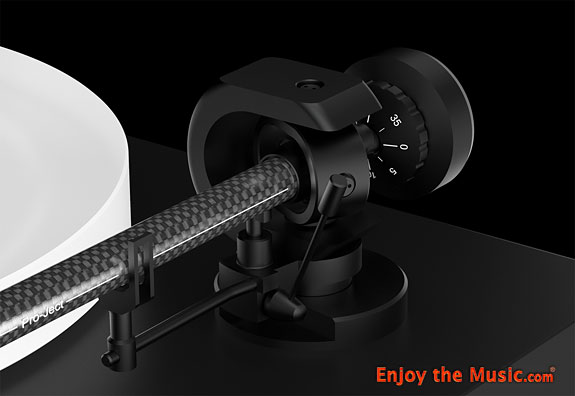
Lest one thinks that this review is turning into a turntable design tutorial, my first thought was to condense the remaining portion of the turntable’s description. But so much of the Pro-Ject X2’s design is worth mentioning, especially since so much of it translates to excellent performance, and also, so much of it is rare for a turntable at this price. Very simply, much of the X2’s design encompasses good engineering practices, but at the same time extends what is possible within the turntable’s price range. This is largely due to the design of the X2’s high-quality motor, combined with its resistance to outside vibrations without using what is often a very expensive suspension system.
The X2 uses a “sophisticated” DC/AC generator board along with its speed control board, which is intended to deliver cleaner and a more stable power to the X2’s motor system. The Pro-Ject X2’s motor is decoupled from the main plinth using a new motor suspension system, and this motor drives a new, heavy, non-resonant Acryl (acrylic with satin-ized surface) platter with a sub-platter drive system and a “premium grade” main bearing. I’m somewhat familiar with the X2’s type of platter, as my reference Basis Audio turntable in my main system uses an acrylic platter. I’ve found that using an acrylic platter enables the record’s surface and the acrylic platter to form a solid bond when using a record clamp or weight (I’ve seen and used the 16-ounce record weight that is offered on Amazon that cost about $20 that is as good as any).

Obviously, the X2’s azimuth and VTA are user-adjustable, and with the turntable’s pre-mounted Sumiko Moonstone moving magnet phono cartridge I can’t think of any user that is upgrading to this ‘table having any sonic complaints. In fact, with is 2 kg Acryl platter, 50mm thick MDF chassis that was formed by their CNC machined that has 8-layers of painting and hand polished finish, or an optional real-wood stain-finished veneer, height adjustable aluminum machined vibration absorbing feet, and a supplied phono cable that is “super-shielded, semi-symmetrical”, low capacitance and designed by Pro-Ject, there will be much to like about the Pro-Ject X2 turntable. Especially after one plays a record!
Systems
Those who are familiar with my reviews might remember that I have two audio systems. My main system resides in a dedicated listening room, and the second system is located two floors away from the main system in a common area of our home. Besides being able to enjoy music on this system off-axis, more importantly, it allows me to have a system where I can review more affordable high-end audio equipment. At least that’s what I originally intended. As time has gone by, this second system has become more and more elaborate. But still, in general, the equipment in this system tends to be less impressive (and expensive) than my main system.
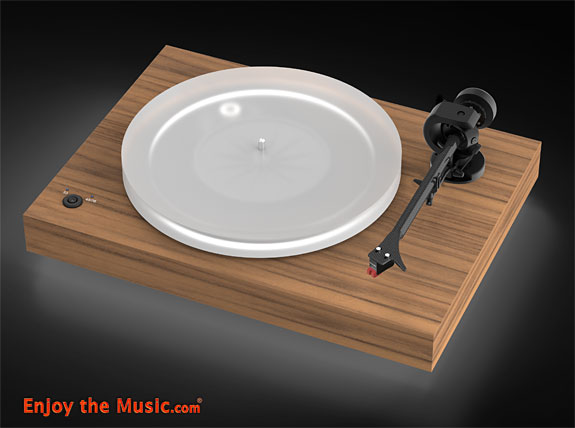
Audition
In my review of the Chord Huei phono stage that I wrote about last month, I used this X2 turntable to audition that small but mighty British phono stage. Just for fun, and as an alternative, and to hear what I considered its full-potential, I also connected the X2’s tonearm cable to my reference Pass Laboratories XP-17 phono stage. Either the Chord or Pass Labs phono stage was then connected to a Mark Levinson No 523 full-function preamplifier, which also happens to have an on-board phono preamplifier. The Mark Levinson preamp was connected to a pair of PrimaLuna DiaLogue 6 monoblock tube amplifiers, but I also had had on hand an Audio Analogue Maestro Anniversary integrated amplifier. This solid-state, 150 Wpc component is designed and manufactured in Italy, and was a nice alternative to the tube monoblocks. Since the Audio Analogue is an integrated amplifier it made the Mark Levinson preamp unnecessary, so I connected the phono preamplifier directly to one of the integrated amp’s RCA inputs.
I used three different pairs of speakers during the Pro-Ject X2’s audition period, all the speakers were very different from each other. At first, I used the opulent 100 pound each Kharma Elegance dB7 speakers that I reviewed in October 2019. After they were sent back to The Netherlands, I used my reference EgglestonWorks Isabel Signature two-way floorstanding speakers, but not for too long, because I soon took delivery of two different pair of JensZen electrostatic/dynamic hybrid speakers, one pair passive, the other pair self-powered (review forthcoming).
Listened
I listened to all types of music while auditioning the Pro-Ject X2, not only for casual listening, but as a source for reviewing other types of gear that was passing through this system for audition. The $1495 Chord Huei phono stage was a great match for this turntable. I don’t think one needs to spend this much on a phono preamplifier to enjoy the Pro-Ject X2, but if one can afford it, I think it would be a great match. But again, one can still enjoy the X2 with a more modest phono stage. The Chord Huei made for an excellent review tool, and made it so I could accurately hear what the Pro-Ject X2 was sonically made of.
In the Huei review I talk about which LPs were in the record rack adjacent to the system, which contained albums by David Bowie, Killing Joke, Joy Division, King Crimson, and Michael Legrand. This list is a relatively limited one, and I suppose reveals what type of mood I was in during this review period! These records also revealed that the Pro-Ject X2 was able to handle very dramatic changes in amplitude due to the macrodynamic swings that are present on almost every album I played. The X2 proved that it was an excellent tracker, as I didn’t even think about whether or not this turntable/tonearm combination would be able to track these records. The records spun, I listened.
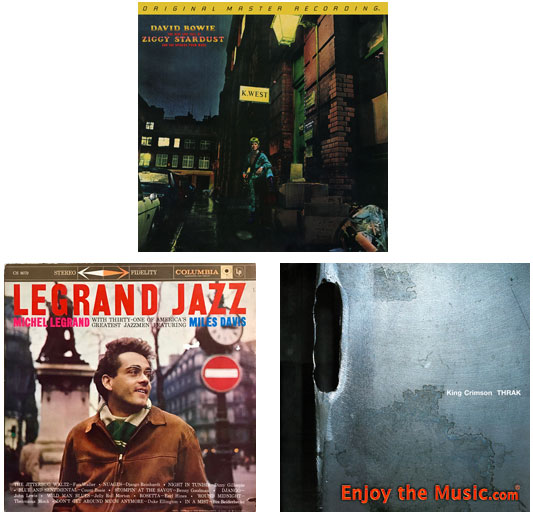
One of these albums, Michael Legrand’s Legrand Jazz has a particular sound quality that is spectacular, and can easily be used as a demo record to show off one’s system, if desired. It’s a 2 LP collection, running at 45 rpm, featuring many of the jazz luminaries of the day when it was recorded in Columbia Studios in 1959. Miles Davis, John Coltrane, Bill Evans, and Herbie Mann are just a few of the players on this album that were led by conductor and arranger Michael Legrand, and this album of mostly “Fake Book” standards is one that I’ve been listening to quite often during the audition period of this turntable. And why not? It has just about everything that one would want in a great album of jazz (other than vocals) to audition a system, great songs, excellent musicianship, and great sound. On this album it helped show that the Pro-Ject X2 had as little “sound” of its own, which is much less than I would expect from a turntable in this price range.
Since this turntable has no suspension to speak of, I had to make sure it was isolated not only from airborne vibration, but vibration from the rest of the room, especially the floor. I found that putting a concrete slap under the turntable helped vastly improved the sound by stabilizing the turntable and thus not letting any of the sound from the system affect the sound of the music coming from the turntable. This was true especially with the bass frequencies, and especially when I was using speakers with a good amount of low-frequency energy such as the JensZen speakers, that had one of their two woofers at the lower portion of their baffle close to the floor. I don’t think one would need something as massive (and unattractive) as a concrete slap under this turntable to aid in vibration control. But I sometimes tend to go a bit overboard.
Farther
The Pro-Ject X2 was shipped to me with a pre-installed Sumiko Moonstone moving magnet (MM) phono cartridge. I liked it very much that the phono cartridge was already installed, and also that the tonearm was set up accordingly. This will save one lots of time when setting up this turntable package. And so, basically, this turntable is “plug and play”. Yes, I had to place the platter on the plinth and attach to platter’s belt, and also set up the tonearm’s anti-skate mechanism, plus attach the turntable’s dust cover. I’d guess it took me about 15 minutes from the time I broke the tape on its carton to playing my first record. Just for fun, I did check all of the settings on the turntable and tonearm, and every single parameter measured spot-on.
During the end of the review period I also had the opportunity to try a few different phono cartridges other than the pre-installed moving magnet Sumiko Moonstone. All the other cartridges I installed were more expensive, and some were much more expensive, low-output moving coil (MC) phono cartridges, and most of them were more expensive than most X2 owners would likely use. But it did give me a greater sense of what the X2’s sound was without the limitation of a lesser cartridge. I installed a Lyra Kleos, then a Gold Note Tuscany, and finally a very impressive, brand new Ortofon Winfeld Ti that I was loaned for auditioning the Chord Huei phono stage.
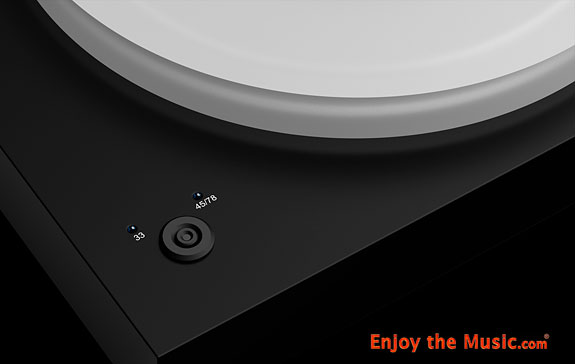
What I came away with during this period with the pricier phono cartridges mounted on the X2’s tonearm was the realization that the X2 was a very stable, pitch specific, musical sounding turntable, even though I spent most of my time listening to the Pro-Ject X2 with the supplied moving magnet Sumiko Moonstone phono cartridge. Since the turntable itself is the most important in determining the final sound one gets from their analog front-end, followed by the tonearm, then the cartridge, all that the other cartridges gave me was a more embellished sense of the characteristic I was focusing on. For example, when during the review period I was praising the X2’s ability to reveal the inner details of a recording, a pricier cartridge was able to dig a bit deeper into a record’s grooves to reveal more of this detail. This was especially true of the very fine, but inappropriately priced for this review Ortofon Winfeld Ti. Even though this cartridge costs nearly 3 and a half times the price of the Pro-Ject X2, it could not create a sonic trait that wasn’t there in the first place. But again, it definitely helped give me a more embellished sense of the X2’s sonic characteristics.
Progressed
As the review progressed, and even though I knew I wasn’t auditioning the most expensive turntable on the market, I would soon forget about the delivery system and simply focus on the music. I realize that last bit might sound cliché, but it’s true, I really was able to forget about what type of turntable or cartridge I was listening to, even whether or not I was listening to a digital stream. This didn’t happen all the time, but occasionally a passage would make it known that I was listening to vinyl, mostly because of the treble, in that it was much more organic sounding than when I play it through just about any digital player I’ve had in this system of late.
The X2 was able not only able to track what I considered the most difficult passages on some of these LPs, but more importantly, was able to separate all the instruments, vocals, and sounds on these records, and place each of them into a discrete area in a huge soundstage that would fill the front portion of my listening room. This turntable was able to perform what I consider a very important feature of high-end turntable, the feature that separates the merely good from the very good, and that is for the music to have a sense of weight behind it. I have a sneaking suspicion that this was caused by the extra mass that the designers have added to the newest version of this turntable, and the structural integrity of the components that they have attached to it.
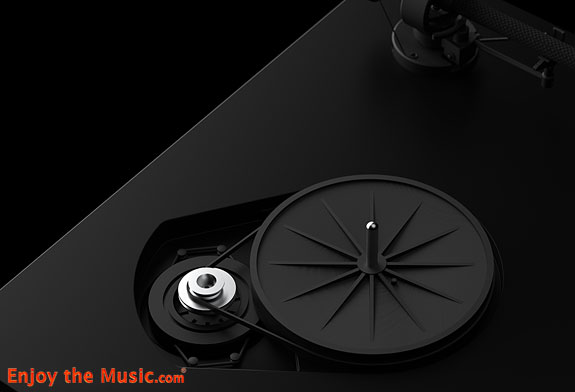
When playing any record from my collection, regardless of genre, again, I felt as if the music was muscular sounding enough to be able to forget about the delivery system, and just sit back and listen to the music. When I played King Crimson’s THRAK double album that was recorded in1995, I could clearly follow the labyrinthine bass playing on this album, whether it was coming from a “normal” Fender-type electric bass or a much more complex and deeper sounding Chapman Stick. Bass players Trey Gunn and Tony Levin were obviously captured on different tracks on a multi-track recorder and even split between the left and right channels after they were joined at the beginning of the album, but still, the Chapman Stick’s ten or twelve individually tuned strings, whether the bassists were strumming or “slapping” the strings, these talented players were not only playing bass lines on this instrument, but were concurrently playing melodies, chords, and sometimes “sounds” that were new to me.
I also played some less complex fare (relative to the newer King Crimson), including one of my favorite older prog records, The Yes Album. This album was released in 1971. It is the one where Yes guitarist Steve Howe plays his pseudo-classical solo piece “The Clap”, but more significantly, this is their first album to gain them any sort of worldwide attention. Also, and especially noteworthy to Yes fans, is that keyboardist Rick Wakeman had yet to join the band, and so on this album keys are masterfully played by Tony Kaye. I get very turned on by profoundly distorted Hammond B3 organ, and Tony Kaye seems to be one of the best at providing this while being able to keep up with the rest of the band on some of their more complex passages, or sometimes creating a wall of sound using this mind-bending tone.
This is an album that I’ve loved since high school, and so I eventually ended up owning a 1973 pressing from Japan – just to make sure I was listening to the best copy I could find. The Pro-Ject X2 sailed through this album without breaking a sweat. In other words, it was not only able to adroitly track through some very loud passages on this album, but was also able to draw out any nuance that was also pressed into the grooves of the record. One of the first instruments I noticed on this LP was Chris Squire’s not so nuanced, growling Rickenbacker bass, the X2 being able to reproduce this bass as there was and Ampeg SVT bass amplifier in my listening room.
The singer of Yes, Jon Anderson, has an alto that isn’t the most powerful voice is rock, but when listening to a great Yes album such as this, any additive errors made by the turntable system are easy to hear. This is also where the mids and treble are very important frequencies. Many might think that it is the responsibility of the phono cartridge to be able to handle sounds such as these. But since it is the turntable itself that is responsible for the majority of the analog front-end’s sound quality, this is what is going to determine what you hear coming out of your speakers – if the turntable isn’t designed and built to a certain level of refinement, then it is not worthy of being considered a high-end audio component. I was very happy with the way that the Pro-Ject X2 was able to reproduce this Yes album. Again, it became as if the turntable was not component in the system, but that the music was simply appearing through the speakers without a source, that music was simply “there”. I can think of no greater compliment than this.
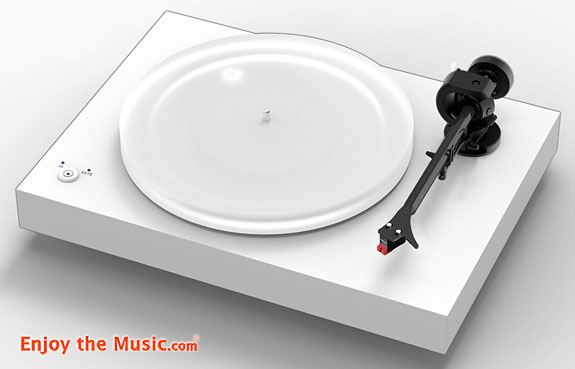
Before I started writing this review, I went back to my Pro-Ject X2 listening notes, but I hardly had to glace at them when remembering my time enjoying one of my favorite albums on the planet (of this writing), David Bowie’s The Rise And Fall Of Ziggy Stardust And The Spiders From Mars. Yes, my personal copy has a leg up on most others because it’s a vintage Mobile Fidelity Sound Lab pressing made in 1981.
The Pro-Ject X2’s reproduction of this tour de force was spot on – it was able to take each instrument and voice that is part of its multi-track recording, and if I paid full time and attention, I could hear each track’s ambience, that is, the acoustic space in which each track was recorded. The X2 was also able to exhibit how this recording differs from almost every modern pop and rock recording since every track on the multi-track wasn’t compressed to hell, that is, played back in the mix at full volume. Each track was mixed differently than the others according to how it contributed to the song, and so each ended up being set at different levels, showing us how producer Tony Visconti painted a picture with sound, a place for each of the sounds and voices, and every sound and voice in its place. Not all analog front-ends can pull off the feat of playing this the record back and demonstrating to us how this was done. The Pro-Ject X2, as part of the analog front-end of my system, was able to achieve this. This was again largely due to its error-free reproduction of the midrange. Yes, the X2’s bass and treble were exemplary, but when reviewing a component, I pay particular attention to music being reproduced within this very important frequency range.
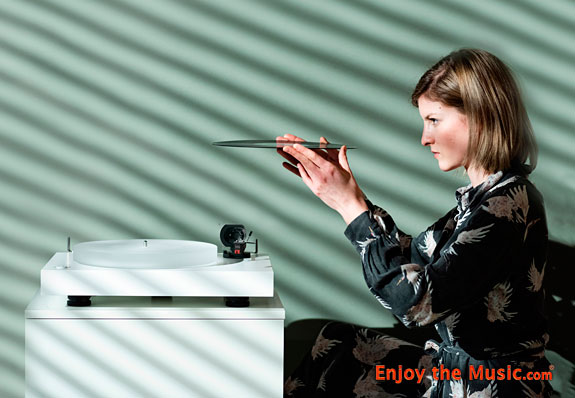
Conclusion
The Pro-Ject X2 is not the most advanced turntable that I ever auditioned. Those who have read reviews of gear auditioned in my main system would be wise not to compare it to anything I said about its analog set-up. But the X2 auditioned in this review possesses many, many fine sonic traits, all in a turntable package that is easy to set up and very easy to use. One can certainly find a turntable that is a well-built and has all of the fine sonic traits of this turntable that I outlined above in this review. But one must understand that one is going to have to spend lots more to be able to get it than what this Pro-Ject X2 package costs. I’ve recommended many Pro-Ject models in the past, and I will certainly continue to do so. If the Project X2 package is in your analog front-end budget, go for it. You will not be disappointed.
| Tonality | |
| Sub–bass (10Hz – 60Hz) | |
| Mid–bass (80Hz – 200Hz) | |
| Midrange (200Hz – 3,000Hz) | |
| High Frequencies (3,000Hz On Up) | |
| Attack | |
| Decay | |
| Inner Resolution | |
| Soundscape Width Front | |
| Soundscape Width Rear | |
| Soundscape Depth Behind Speakers | |
| Soundscape Extension Into Room | |
| Imaging | |
| Fit And Finish | |
| Self Noise | |
| Value For The Money |

Check out Enjoy the Music!
See many great reviews by Enjoy the Music.com at this link.
Specifications
Type: Vinyl LP turntable
Speed: 33, 45, 78 (electronic speed change)
Principle: belt drive
Platter: 30mm thick Acryl, 2 kg heavy Acryl
Main bearing: Stainless steel
Speed variance: 33: +/-0.25%; 45: +/-0.20%
Wow & flutter: 33: +/-0.12%; 45: +/-0.10%
Signal to Noise: 70 dB
Tonearm: 9″ carbon/aluminum sandwich tonearm
Effective arm length: 9″/230 mm
Effective tonearm mass: 13.5 g
Overhang: 18.0 mm
Tracking force range: 0 – 30mN (18mN recommended for Pick it 2M Silver)
Included accessory: 15V DC / 800 mA power supply, dust cover, Connect it E Phono RCA cable, felt mat
Dimensions: 18.1″ x 5.9″ x 13.4″ (WxHxD)
Weight: 22 lbs.
Price: $1299 with Sumiko Moonstone phono cartridge
Company Information
Pro-Ject Headquarter
Wirtschaftspark A5
Analogweg 1
2130 Mistelbach
Austria
Voice: +43 1 544 858 0400
Website: www.project-audio.com














Want to join discussion?
Feel free to contribute!